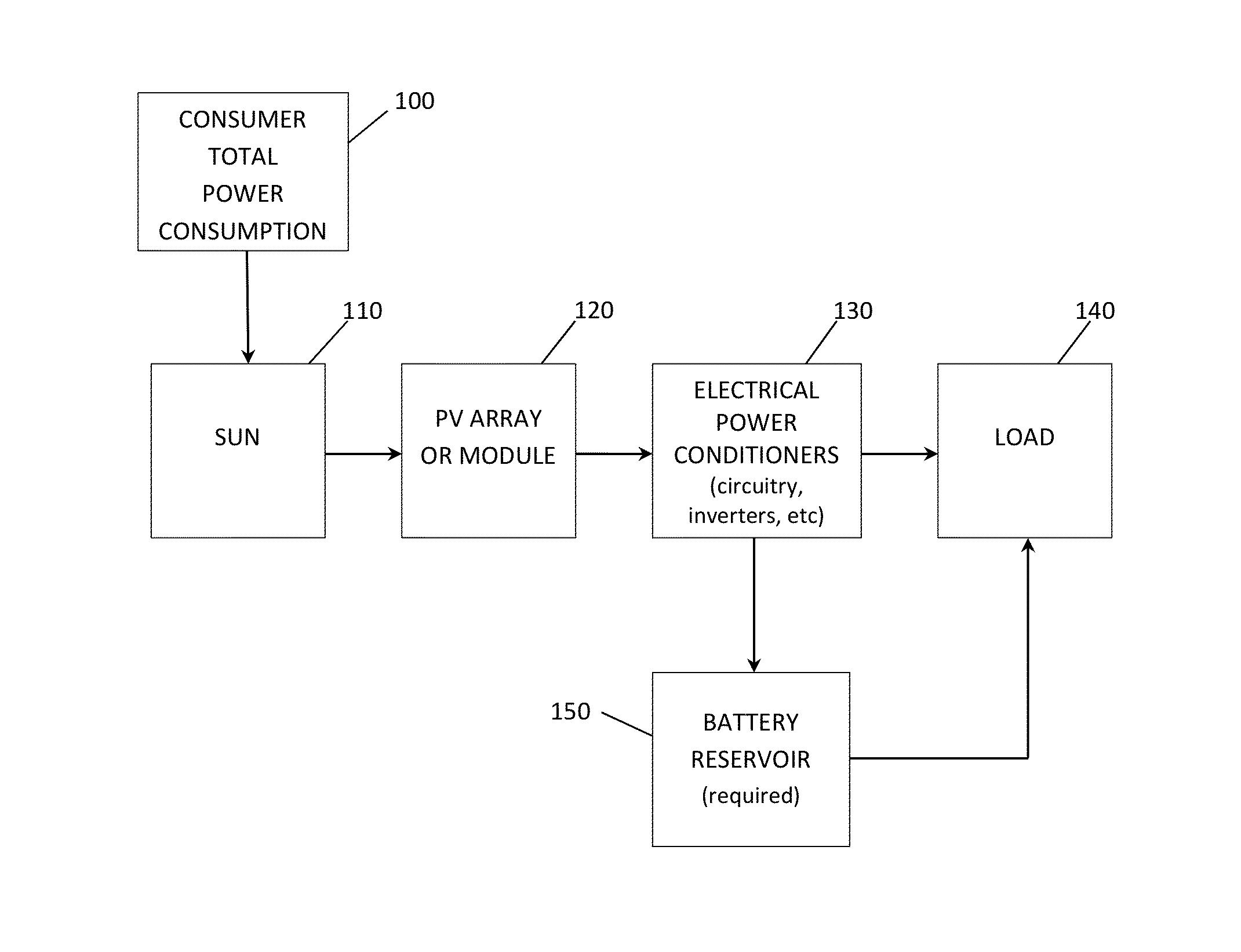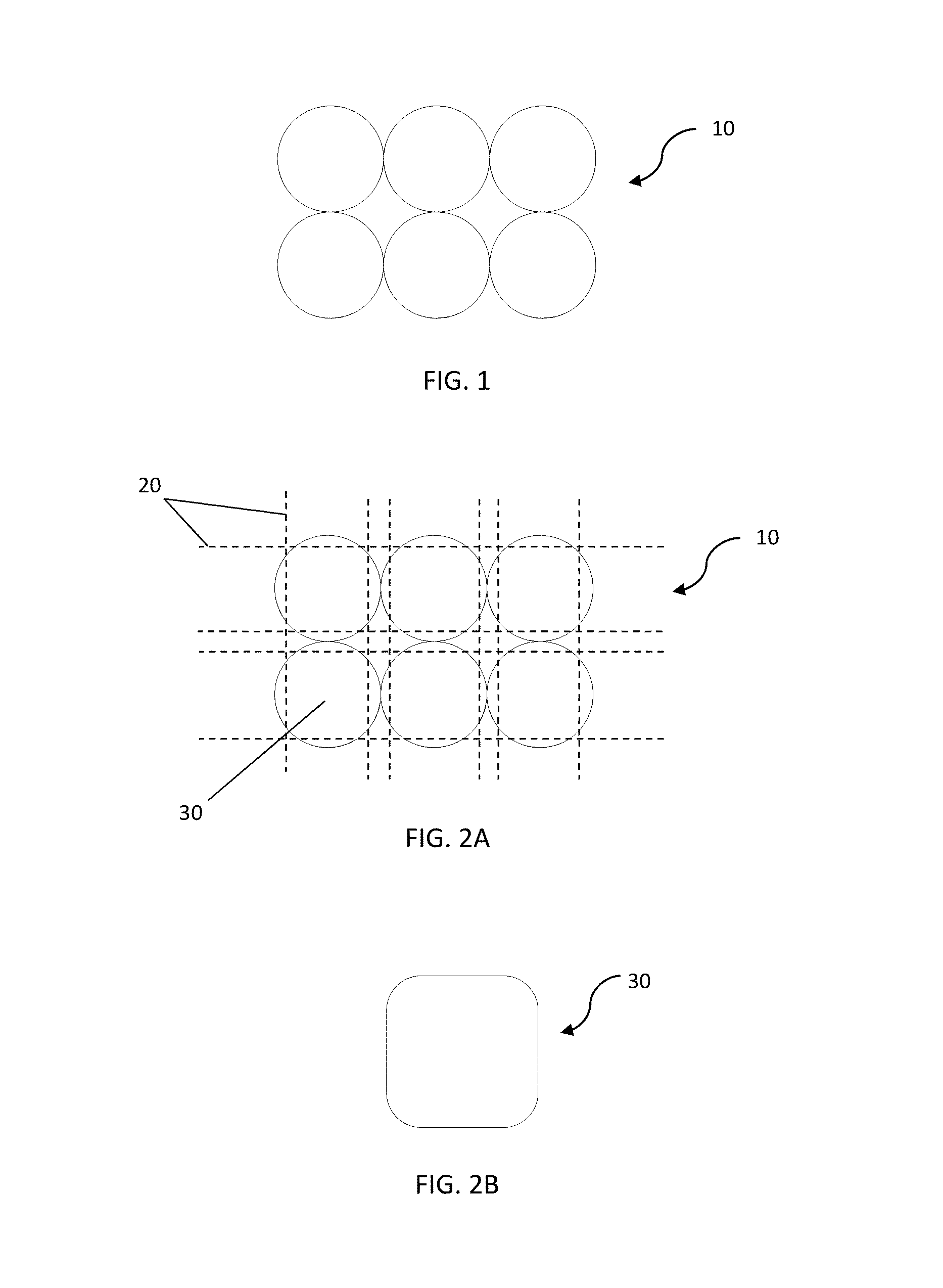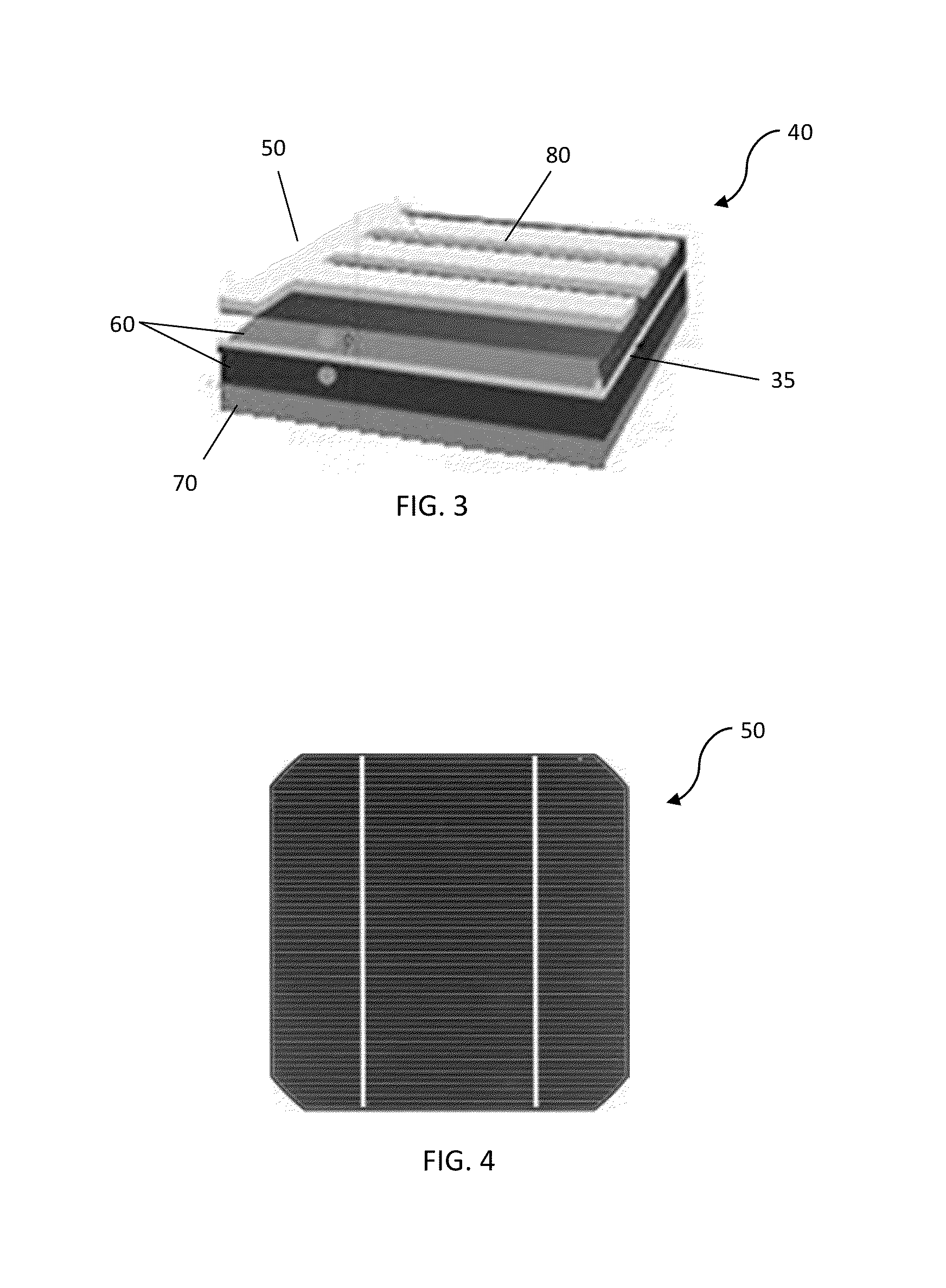Power-conditioned solar charger for directly coupling to portable electronic devices
a solar charger and power-conditioning technology, which is applied in the direction of photovoltaic supports, transportation and packaging, semiconductor devices, etc., can solve the problems of increasing ancillary equipment can be expensive, and add significant costs to the overall cost of the pv system, etc., to achieve convenient replacement, shorten the working life, and improve the effect of service li
- Summary
- Abstract
- Description
- Claims
- Application Information
AI Technical Summary
Benefits of technology
Problems solved by technology
Method used
Image
Examples
Embodiment Construction
[0075]The following description is presented to enable any person skilled in the art to make and use the invention. Various modifications to the embodiments described will be readily apparent to those skilled in the art, and the generic principles defined herein can be applied to other embodiments and applications without departing from the spirit and scope of the present invention as defined by the appended claims. Thus, the present invention is not intended to be limited to the embodiments shown, but is to be accorded the widest scope consistent with the principles and features disclose herein. To the extent necessary to achieve a complete understanding of the invention disclosed, the specification and drawings of all issued patents, patent publications, and patent applications cited in this application are incorporated herein by reference.
[0076]Traditional Solar Cell Manufacturing
[0077]There are a wide variety of methods to manufacture PV cells. In one exemplary description of so...
PUM
| Property | Measurement | Unit |
|---|---|---|
| series impedance | aaaaa | aaaaa |
| power rating | aaaaa | aaaaa |
| power rating | aaaaa | aaaaa |
Abstract
Description
Claims
Application Information
 Login to View More
Login to View More - R&D
- Intellectual Property
- Life Sciences
- Materials
- Tech Scout
- Unparalleled Data Quality
- Higher Quality Content
- 60% Fewer Hallucinations
Browse by: Latest US Patents, China's latest patents, Technical Efficacy Thesaurus, Application Domain, Technology Topic, Popular Technical Reports.
© 2025 PatSnap. All rights reserved.Legal|Privacy policy|Modern Slavery Act Transparency Statement|Sitemap|About US| Contact US: help@patsnap.com



